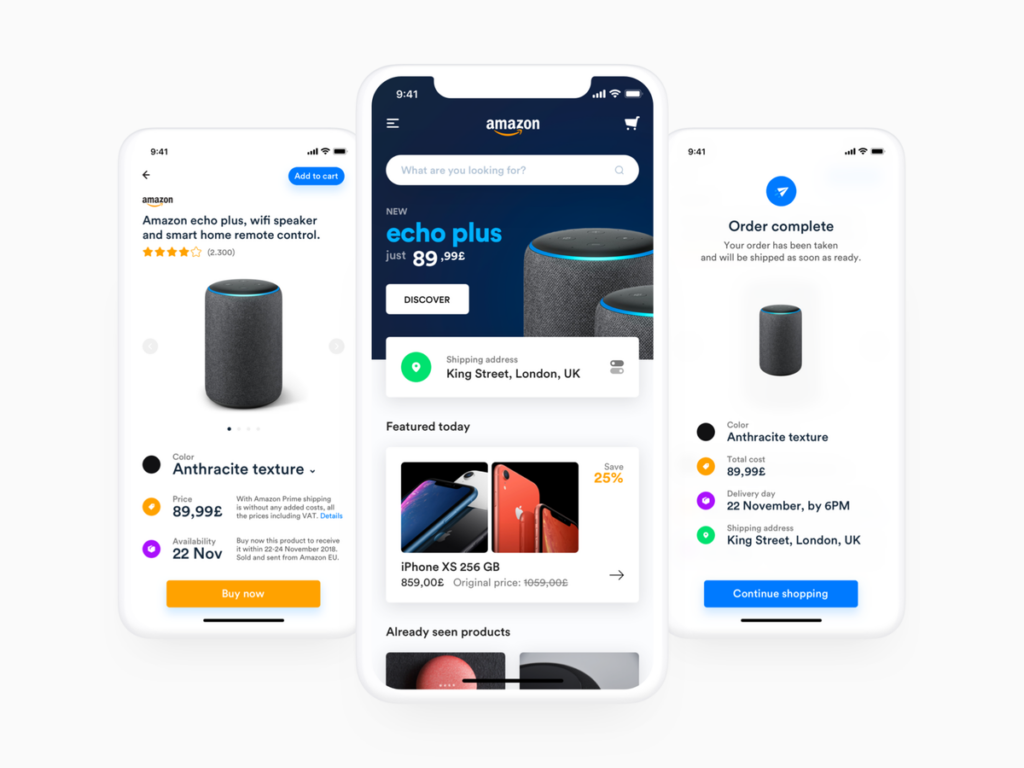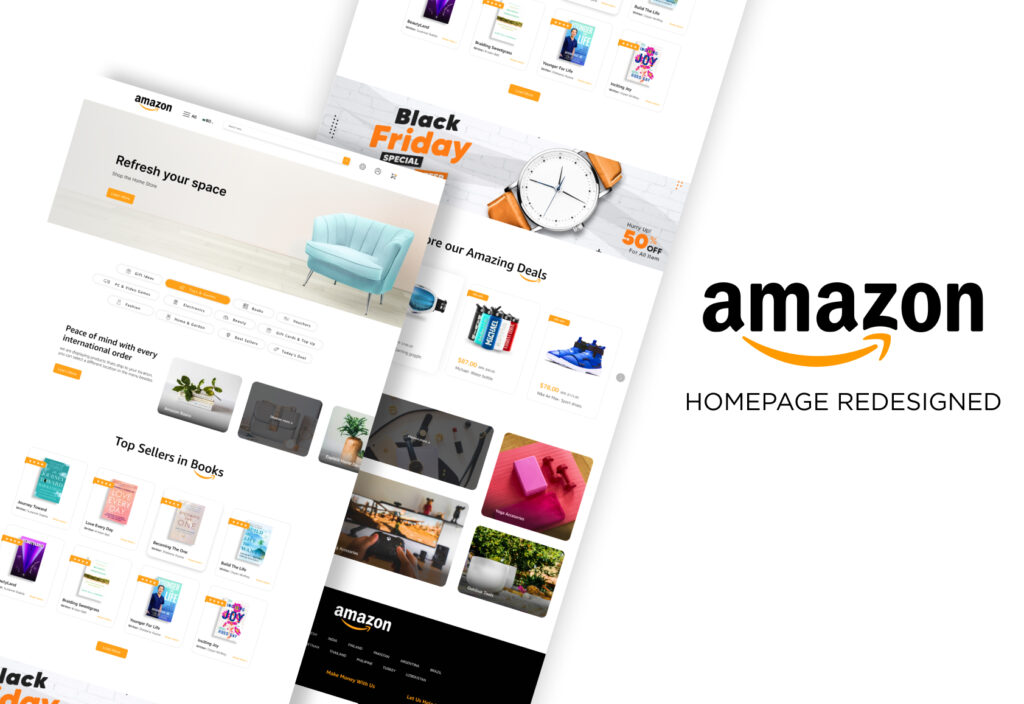As one of the world’s largest e-commerce platforms, Amazon was facing increasing competition in a market that was demanding an even more seamless, intuitive, and personalized shopping experience. With a vast catalog of products, it was difficult for users to discover new items or navigate through different categories. The challenge was to create a more personalized shopping experience and improve product discovery while maintaining Amazon’s massive product variety.

I began the redesign by studying user behavior through Amazon’s analytics and surveys, focusing on pain points in product discovery and the overall shopping journey. Many users reported feeling overwhelmed by the sheer volume of product options and had difficulty finding products that met their exact needs. Others had trouble managing their wish lists and recommendations, leading to a cluttered shopping experience.
Through collaboration with stakeholders and UX researchers, I worked on user personas, including both frequent and new shoppers, and developed new strategies for improving the browsing experience, especially for first-time users.

After the redesign was implemented, Amazon saw significant improvements in user experience: